Looking at my dracaena plant, I feel amazed and connected. These plants bring a tropical vibe to our homes with their vibrant colors and shapes. If you’re drawn to dracaenas like me, you’re in the right spot. This guide will teach you how to care for these beautiful plants.
There are over 100 dracaena species, with a few being popular houseplants. They’re known for their stunning leaves in many colors and patterns. While they can grow up to 20 feet outside, indoor ones stay under 8 feet tall.
Dracaenas are great for low-light spots and are easy to care for. They’re perfect for homes, offices, or any urban space.
Table of Contents
Introduction to Dracaena Plants
Dracaena plants are a diverse and adaptable genus, belonging to the Asparagaceae family. They come from Africa, Asia, and Australia. They have different shapes, sizes, and growth habits. Whether you’re new to gardening or not, learning about these plants can help you create a beautiful indoor space.
What Are Dracaena Plants?
Dracaena plants have spear-shaped or grass-like leaves on cane-like stems. They range from small, tabletop plants to tall ones up to 15 feet. Their unique look and vibrant colors make them a favorite for indoor spaces.
Native Habitat and Growth Characteristics
Dracaena plants love warm, tropical, and subtropical places. They do best in bright, indirect light but can handle low light too. They grow slowly, making them great for indoor spaces over time.
Benefits of Growing Dracaena
Dracaena plants are not just pretty; they also clean the air. They remove harmful chemicals like formaldehyde. Plus, they’re easy to care for, perfect for anyone, even beginners.
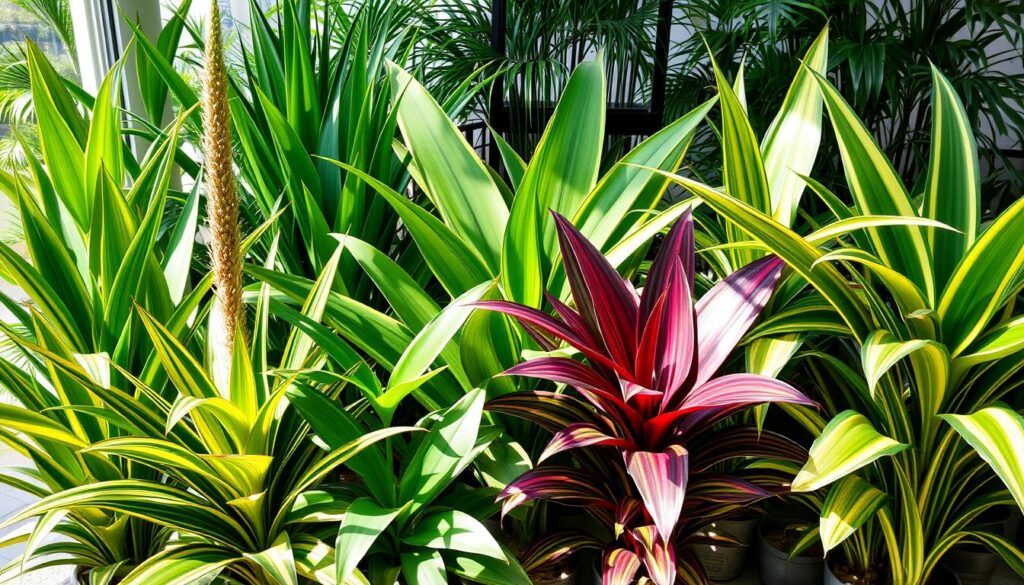
“Dracaena plants are a true testament to the beauty and resilience of nature. Their unique silhouettes and air-purifying abilities make them a must-have for any indoor space.”
Popular Dracaena Varieties for Home Growing
Looking to add a touch of lush, tropical flair to your home? Explore the diverse world of dracaena varieties. These plants come in many shapes, sizes, and colors. They fit well in different home settings.
The Corn Plant (Dracaena fragrans) is a favorite for its broad leaves and upright growth. The Dragon Tree (Dracaena marginata) stands out with its red-edged foliage, reaching up to 6 feet tall indoors. The Lucky Bamboo (Dracaena sanderiana) is a charming, compact option, growing up to 3 feet tall.
Other notable varieties include the Song of India (Dracaena reflexa) with vibrant green and yellow leaves. The Dracaena draco is a stunning, tree-like plant that can grow up to 4 feet tall indoors. Whether you like bold colors or intricate patterns, there’s a dracaena for you.
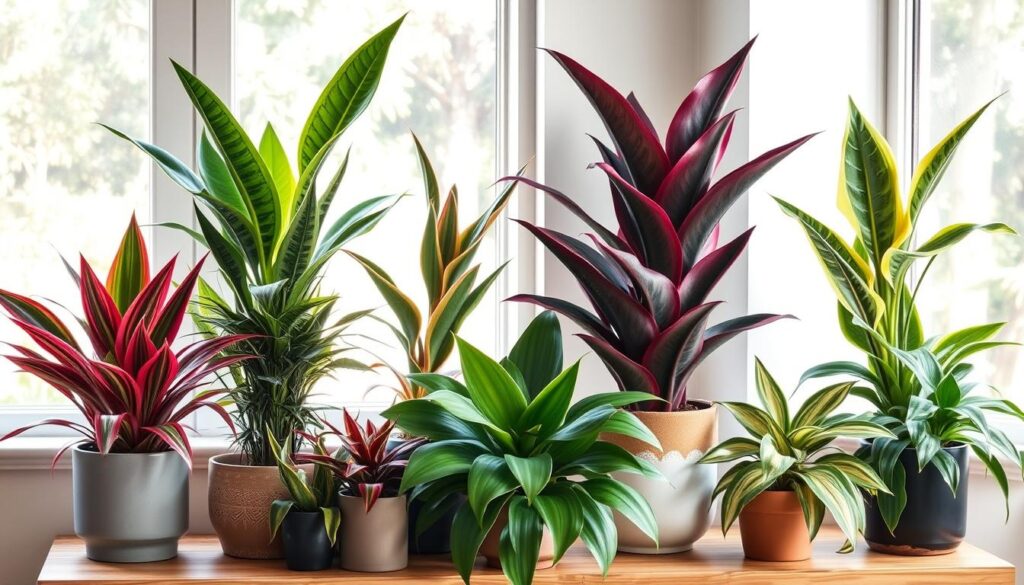
When choosing a dracaena, think about light needs, growth habits, and size. Dracaena plants are easy to care for, low maintenance, and adapt well to indoor conditions. They’re a great choice for any plant lover.
Light Requirements and Placement
Dracaena plants need specific light to grow well and look great. Knowing what light they need is key for growing them indoors and outdoors.
Indoor Light Conditions
Indoors, dracaena plants do best in bright, indirect light. They should be near windows with filtered sun, not direct sun. This can burn their leaves. Some types, like Dracaena marginata and Dracaena fragrans, can handle less light and do well in corners.
Outdoor Light Requirements
Outside, dracaena plants like partial shade or dappled sun. They should not get too much direct sun, as it can make their leaves pale and damaged. Dracaena types like Dracaena deremensis can take a bit more sun.
Signs of Improper Lighting
- Pale, dry, or scorched leaves mean too much light.
- Slow growth and small, sparse leaves mean not enough light.
Watch your dracaena closely and adjust its light as needed. This will keep its leaves looking vibrant and healthy.
| Dracaena Variety | Light Requirement | Light Tolerance |
|---|---|---|
| Dracaena marginata | Bright, indirect light | Moderate to low light |
| Dracaena fragrans | Bright, indirect light | Moderate to low light |
| Dracaena deremensis | Partial shade to dappled sun | Moderate to high light |
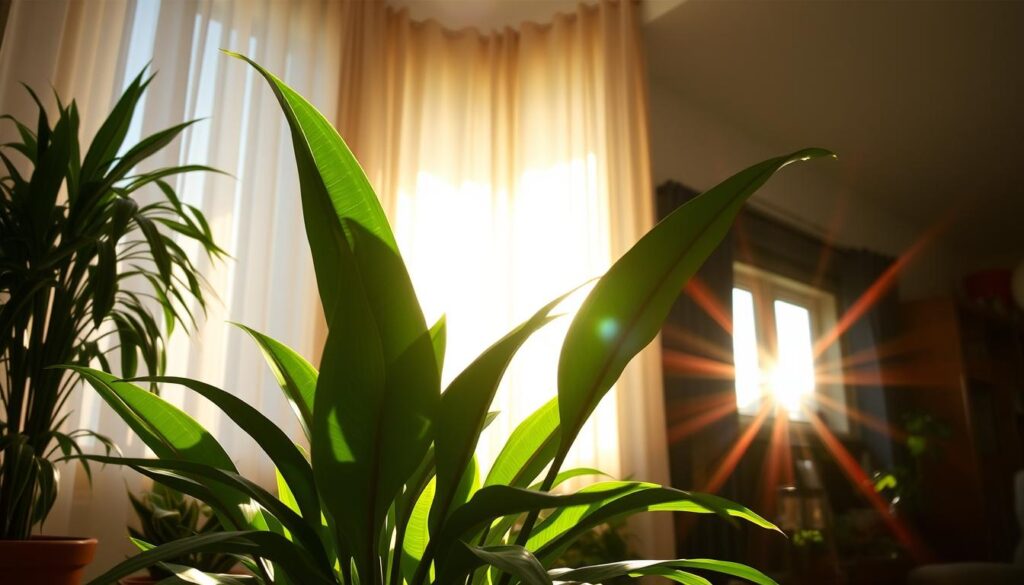
Soil and Potting Requirements
For healthy dracaena plants, the right soil and potting mix are key. They like a mix that drains well and is slightly acidic, with a pH of 6.0 to 6.5. A peat-based mix made for container plants is a great choice. If you’re growing them outside in warm places, use rich, well-drained soil.
As dracaenas grow, they need a new pot every 1-2 years, usually in spring. Choose a pot with holes for drainage. Adding perlite or sharp sand to the mix helps prevent waterlogging. This stops root rot and other problems.
Right dracaena soil and dracaena care through proper potting and repotting are vital. They ensure these plants stay healthy and grow well.
| Soil Type | Pot Drainage | Repotting Frequency |
|---|---|---|
| Well-draining, slightly acidic (pH 6.0-6.5) | Ensure good drainage holes | Every 1-2 years in spring |
By following these tips for dracaena soil and dracaena care, you’ll grow thriving dracaena plants. They’ll do great in your home or garden.
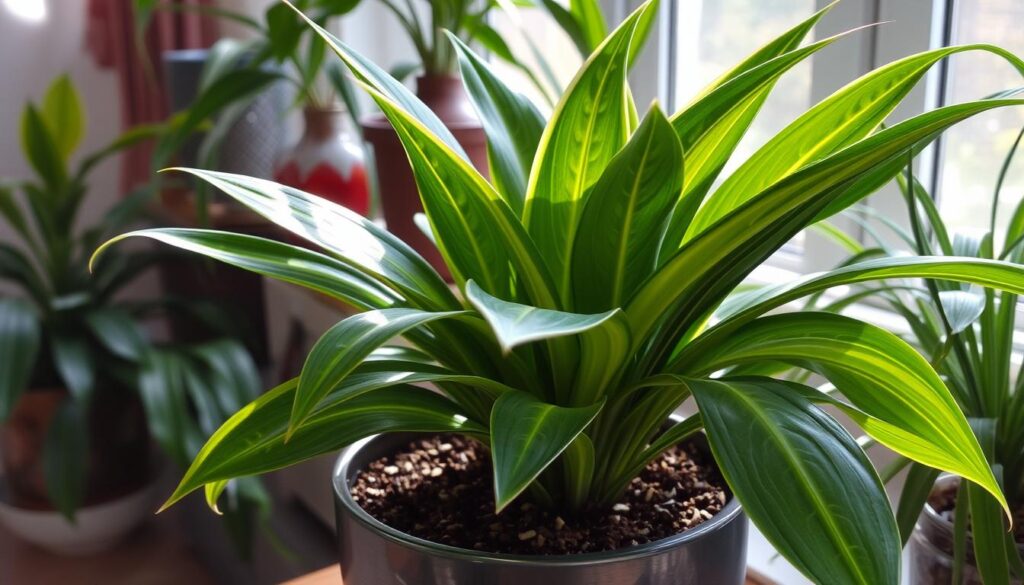
Watering Your Dracaena Plant
Watering your dracaena plant right is key to its health and life span. These tropical plants do best when their soil is a bit dry between waterings. Here are some easy tips to help you water your dracaena just right.
Water Frequency Guidelines
In spring and summer, water your dracaena once a week. Make sure the top inch of soil is dry before you water again. In fall and winter, cut back to watering every two weeks.
Common Watering Mistakes
- Overwatering is a big mistake with dracaena plants. Don’t let the soil get too wet, as it can cause root rot and other issues.
- Dracaena plants don’t like fluoride. It can make their leaves turn brown and curl. Use non-fluoridated, room-temperature water for the best results.
Signs of Over and Under-Watering
| Sign | Cause |
|---|---|
| Yellowing leaves | Overwatering |
| Wilting leaves | Overwatering |
| Drooping leaves | Underwatering |
| Brown leaf tips | Underwatering |
By following these dracaena watering tips and watching for signs of too much or too little water, you can keep your dracaena care on track. This will help your plant stay healthy and thrive.
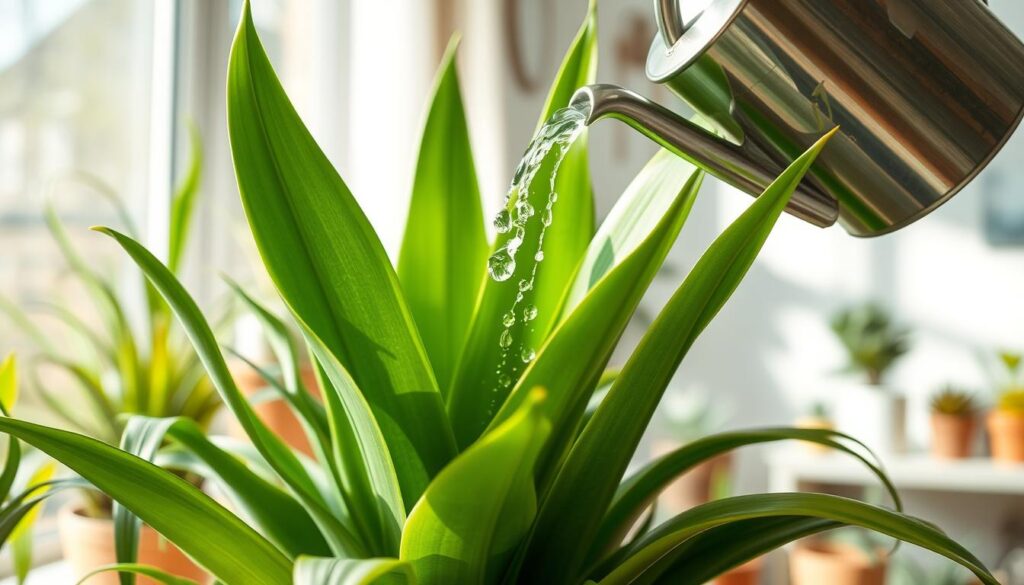
Temperature and Humidity Needs
Caring for your indoor dracaena plant means watching its temperature and humidity closely. These plants love environments that feel like their natural homes.
Dracaena plants do best in temperatures between 65-80°F (18-27°C). They don’t like cold drafts or sudden temperature changes. Most dracaena species need humidity levels between 40-50%.
To keep the air around your indoor dracaena humid, try a few things. Use a pebble tray with water, mist the leaves often, or get a room humidifier. If your plant’s leaves turn brown and crispy, it might not have enough moisture.
The Dracaena draco, or “dragon tree,” is a bit different. It can handle temperatures as low as 50°F (10°C). But, it grows best in warmer conditions.
“Maintaining the right temperature and humidity levels is crucial for the long-term success of your dracaena care indoors.”
By giving your dracaena plant the perfect temperature and humidity, it will flourish. You’ll get to enjoy its stunning leaves for many years.
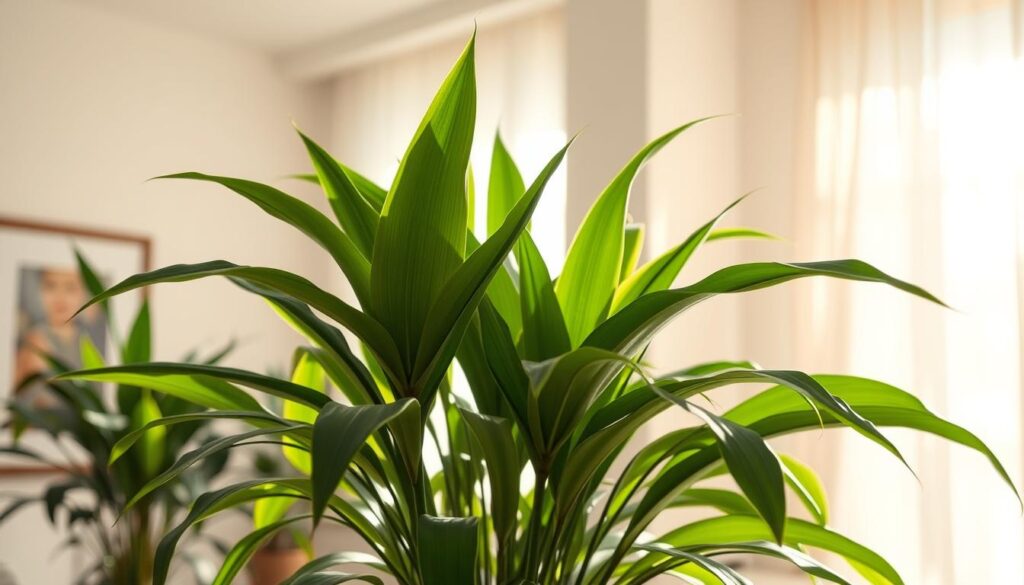
Fertilizing and Nutrition Guidelines
Proper fertilization is key for your dracaena care plants to stay lush and vibrant. Whether indoors or outdoors, a regular feeding schedule boosts their health and looks.
Types of Fertilizer to Use
For the best results, use a balanced, water-soluble houseplant fertilizer in spring and summer. Choose a formula with an NPK ratio of 3-1-2 or 5-10-5. This mix offers the right nutrients.
Remember to dilute the fertilizer to half-strength to prevent over-fertilizing. This can cause leaf burn and other problems. You can also use a slow-release fertilizer once at the start of the growing season for a steady feed.
Feeding Schedule
- Feed dracaena plants monthly in spring and summer when they grow the most.
- Stop fertilizing in fall and winter when growth slows down. They need less nutrients then.
- Adjust the feeding schedule as needed, based on the specific variety and the plant’s response to the fertilizer regimen.
By following these dracaena care guidelines for fertilizing and nutrition, you’ll keep your indoor or outdoor dracaena plants looking vibrant and healthy all year.
Pruning and Maintenance
To keep your dracaena plant healthy, you need to prune and maintain it regularly. Prune your dracaena in spring or summer to control its growth. This helps shape the plant and keeps it looking good.
Remove any yellow or dead leaves as soon as you see them. This keeps your dracaena looking tidy and attractive.
If your dracaena gets too leggy, cut back the main stem. This encourages bushier, more compact growth. You can even use the pruned stems to grow new dracaena plants.
Also, clean the leaves of your dracaena with a damp cloth. This removes dust or debris from the foliage. To keep the plant looking neat, trim away any brown or damaged leaf tips with clean, sharp scissors.
By following these simple dracaena pruning and maintenance tips, your dracaena plant will stay healthy and vibrant. It will also look great in your home or office.
Propagation Methods
Dracaena plants can be easily grown using two main methods: stem cuttings and root division. These ways let you create new plants from the ones you already have. This is great for growing your collection or sharing with loved ones.
Stem Cutting Technique
In the spring, cut an 8-inch piece from your dracaena’s stem. Remove the lower leaves and dip the cut end in rooting hormone. Plant it in moist soil, keeping it warm and humid until roots grow, which takes weeks.
When new growth shows, move the cutting to its own pot.
Root Division Method
Dracaena plants can also be grown by dividing the roots when repotting. Remove the plant from its pot and find offshoots or pups on the main roots. Carefully separate these divisions, making sure each has its own roots.
Plant the divisions in fresh potting mix, watering them sparingly until they grow new leaves.
FAQ
What are dracaena plants?
Dracaena plants are tropical evergreen shrubs and trees. They are popular houseplants worldwide. Their leaves are often colorful and variegated.
What are the growth characteristics of dracaena plants?
Dracaena plants can grow up to 8 feet tall indoors. Some can reach 20 feet in their natural habitats. They have long, grass-like leaves on cane-like stems.
Dracaenas are easy to care for. They can handle low light and can live for many years.
What are the benefits of growing dracaena plants?
Dracaenas can clean the air by removing formaldehyde and other pollutants. They are also easy to care for and fit well in many homes.
What are some popular dracaena varieties?
Some popular dracaena varieties include the Corn Plant and Dragon Tree. Lucky Bamboo and Song of India are also favorites. Other notable species are Dracaena draco, Dracaena deremensis, and Dracaena surculosa.
What are the ideal light requirements for dracaena plants?
Dracaenas like bright, indirect light but can handle low light. Indoors, place them near windows with filtered sunlight. Outdoors, they do well in partial shade or dappled sun.
Avoid direct sunlight to prevent leaf scorch.
What type of soil do dracaena-plants prefer?
Dracaenas like well-draining, slightly acidic soil with a pH of 6.0 to 6.5. Use a peat-based potting mix for indoor plants. For outdoor growth in tropical areas, choose rich, well-drained soil.
How often should I water my dracaena-plant?
Water dracaenas when the top inch of soil feels dry. Water weekly in spring and summer. In winter, water every two weeks.
What are the ideal temperature and humidity requirements for dracaena-plants?
Dracaenas prefer temperatures between 65-80°F (18-27°C). They like high humidity. Use a pebble tray, mist leaves, or a humidifier to increase humidity.
How should I fertilize my dracaena-plant?
Feed dracaenas monthly in spring and summer with a balanced fertilizer. Dilute the fertilizer to half-strength. Stop fertilizing in fall and winter.
How do I prune and maintain my dracaena-plant?
Prune dracaenas in spring or summer to control growth. Remove yellow or dead leaves. Cut back the main stem for bushier growth. Clean leaves with a damp cloth to remove dust.
How do I propagate my dracaena-plant?
Propagate dracaenas in spring with stem cuttings or root division. For stem cuttings, cut an 8-inch section, remove lower leaves, and dip in rooting hormone. Plant in moist potting mix. For root division, separate offshoots during repotting.

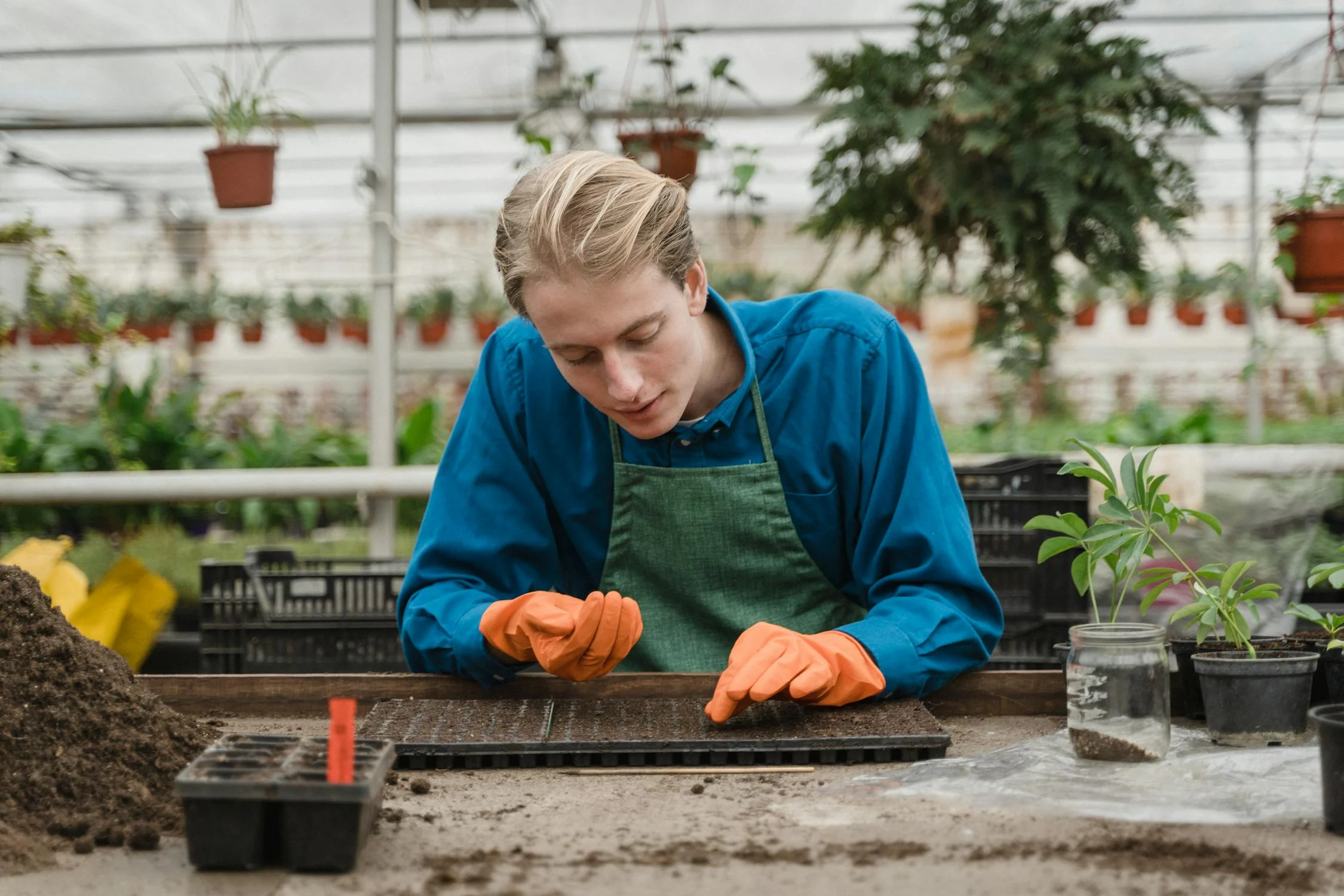
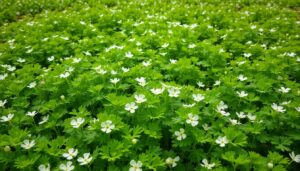
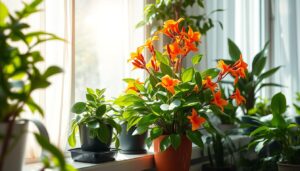

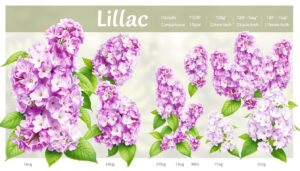

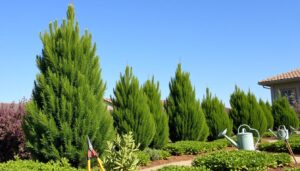
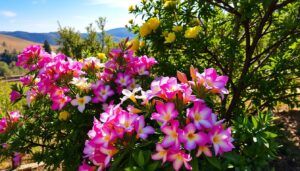
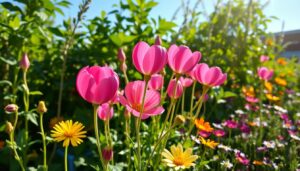
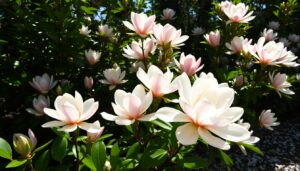
1 thought on “Growing Dracaena Plant: Complete Care Instructions”